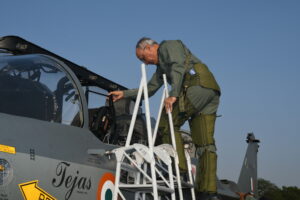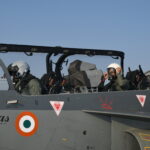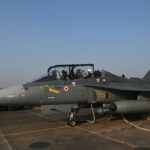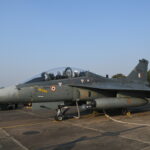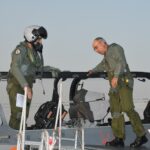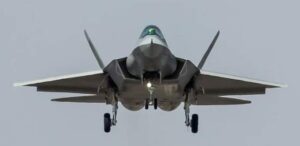Centralised Planning and Decentralised Execution.
These are fundamental concepts that have evolved over decades of aerial employment and are often applied to air warfare.
These terms refer to the method of decision-making, formulation, and execution of plans.
Effective air warfare often involves a combined approach, where centralised planning is integrated with decentralised execution.
Air operations need to be centrally controlled, to achieve advantageous synergies, establish effective priorities, capitalise on unique strategic and operation flexibility, ensure unity of purpose, and minimise the potential for competing objectives.
Execution of air missions should be decentralised to achieve effective spans of control, responsiveness, and tactical flexibility.
This approach leverages the strengths of both concepts, allowing for strategic coherence while maintaining the agility required for effective tactical operations.
Robust communication, information-sharing mechanisms, and feedback loops are essential for highly dynamic air warfare.
These facilitators allow the decentralised units to have access to requisite information so that they can adjust their plans as needed while remaining aligned with the overall strategy.
The feedback helps higher formations to refine plans and adjust strategies based on the evolving operational environment.
Centralised Planning.
Centralised planning involves the coordination of various resources, including aircraft, personnel, intelligence, and logistics.
The allocation of resources, including aircraft types, munitions, and support assets, is typically managed centrally to optimise their use in achieving strategic objectives.
In a centrally planned approach, decision-making authority is concentrated at higher levels of command, typically within centralised headquarters or strategic planning centers.
High-ranking commanders are responsible for formulating strategic objectives, mission plans, and overall campaign strategies.
The central command structure ensures that all elements of air power are aligned with the overarching strategic goals.
The centralised planning process allows for the development of a coherent strategic vision that considers long-term objectives, and the alignment of air assets with broader military and political goals.
Decentralised Execution.
Once the overall plan is formulated, decentralised execution is carried out by delegating authority to lower echelons of command.
Tactical decisions are often made at the operational and tactical levels, closer to the point of engagement.
Decentralised execution allows for greater adaptability and flexibility in responding to dynamic and rapidly changing situations, and emerging opportunities or threats.
Local commanders have the autonomy to make real-time decisions based on the evolving circumstances on the battlefield.
Resource Allocation.
Providing resources (platforms, sensors, and weapons) to the command headquarters for fighting the air war is the responsibility of the service headquarters.
These resources are allotted ab initio, and reallocation is done during the war depending on the situation.
The initial allocation is carried out depending on the nature of the threat envisaged in the command Area of responsibility.
The Allotment plan needs to be prepared after a detailed analysis of various factors like enemy capabilities, the enemy concept of operation, terrain, likely employment philosophy, end state, war endurance, etc.
Active Monitoring.
In the orchestration of air war, the roles of the service headquarters include conveying higher directions, monitoring the progress of operations in all zones/fronts, and providing the required wherewithal.
Active monitoring means not only listening out or observing, but collecting data continuously, analysing, anticipating, and proactively providing resources from the reserve or by transferring from one zone to the other.
Suggestions and value additions are most welcome
For regular updates, please register here:-
Subscribe
References and credits
To all the online sites and channels.
Disclaimer:
Information and data included in the blog are for educational & non-commercial purposes only and have been carefully adapted, excerpted, or edited from sources deemed reliable and accurate. All copyrighted material belongs to respective owners and is provided only for purposes of wider dissemination.
